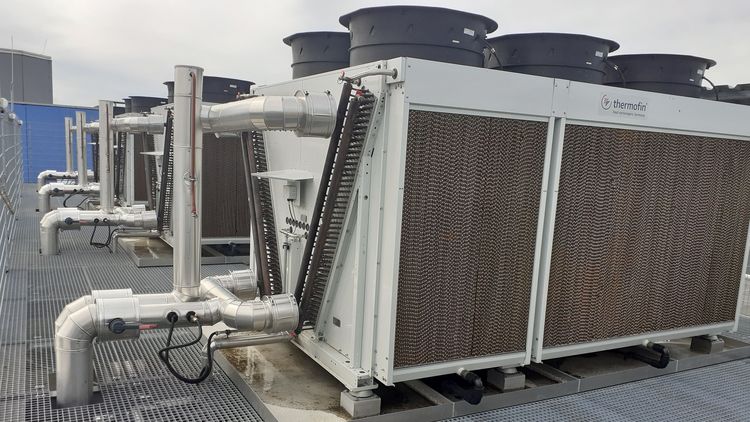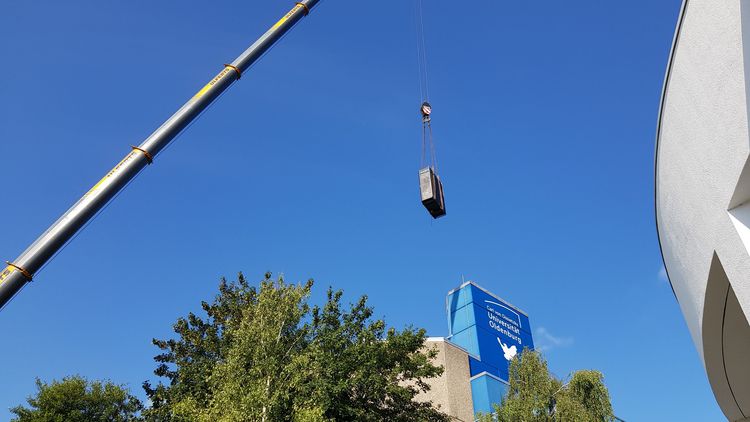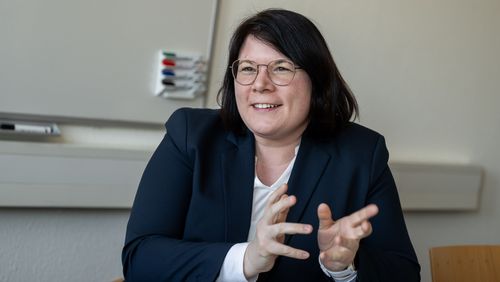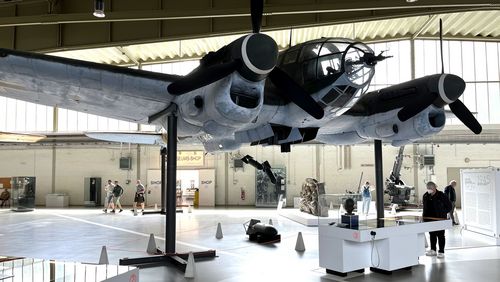The university is using heat energy more efficiently: It recovers waste heat from its computer centre, saving 100 tonnes of CO2 per year, making it one of the few universities in Germany to do so.
As well as being a pioneer in the use of solar energy, the university is now tackling the energy-efficient refurbishment of buildings on its way to climate neutrality. It is one of the few universities in Germany to recover waste heat from components of its data centre. The measure is part of the WärmewendeNordwest project, funded by the German Federal Ministry of Education and Research (BMBF) and led by Oldenburg energy computer scientist Prof. Dr Sebastian Lehnhoff. As part of the project, several innovative cooling and heating systems are being installed at the university and intelligently networked to reduce energy costs and CO2 emissions. The aim is to use energy more efficiently while developing solutions that can be transferred to other universities.
The first implemented measure is a heat recovery system for the university's new high-performance computing cluster installed in 2023. “The servers of the cluster are cooled using water because modern processors have such an enormous power density,” explains Meik Möllers, Head of Facility Management at the university. The temperature of the cooling water when it leaves the cluster is around 45 degrees Celsius. This thermal energy will now be put to good use: a high-temperature heat pump heats the water to 75 degrees Celsius and the system then feeds it into the university's heating network. This heat supplements the output of the combined heat and power unit on the Haarentor campus, which supplies buildings A1 to A15 as well as the library, the canteen and the sports complex with heat. “Because the heat from the data centre is available all year round, it can also be used to heat the university swimming pool, for example,” says Möllers. The heat recovery system supplies around 500,000 kilowatt hours of heat per year, which corresponds to the annual heating requirements of around 30 four-person households and translates into a reduction of at least 100 tonnes of CO2.
Data centre fulfils efficiency standards ahead of time
The other servers in the data centre are air-cooled. A highly efficient compression refrigeration system was recently installed to ensure that they operate safely even when outside temperatures soar to above 40 degrees Celsius. Thanks to these two measures, the university already fulfils the legal requirements of the new German Energy Efficiency Act. The act came into force at the end of 2023 and sets energy efficiency standards for data centres that go into operation from 2026 onwards. The university invested 2.5 million euros of its own funds to ensure that the cooling and power supply systems for its scientific computing feature the latest energy-efficiency technology. A further 300,000 euros came from project funds.
Another two initiatives that form part of the WärmewendeNordwest project are already underway. One is the modernisation of a ventilation system which has been in operation since 1982 at the University Library building. Here, too, a highly efficient heat recovery system will be installed. The other concerns the combined heat and power plant at the Wechloy campus, where a new system called an absorption chiller will utilise energy from the power plant's waste heat to drive cooling processes such as those required in the science labs to cool lasers and other equipment. Both measures are due to be completed this autumn.
Flexibility for the regional energy market
All measures in the WärmewendeNordwest project are part of the “Experimental Campus Digitalised Heat Transition at the University of Oldenburg” work package, led by Ekaterina Lesnyak from the Department of Computing Science. The goal is to develop intelligent optimisation strategies for sector-coupling the university’s heating, cooling, ventilation and power-generation systems, which have been operated in isolation till now. This is to be realised by means of a building management control system featuring integrated autonomous and semi-autonomous software agents. But beyond optimising the campus’s local heating network, the project also aims to create additional flexibility for the regional energy market and electricity grid. The OFFIS – Institute for Information Technology, an affiliated institute of the University of Oldenburg, is responsible for the coordination of the overall project.





